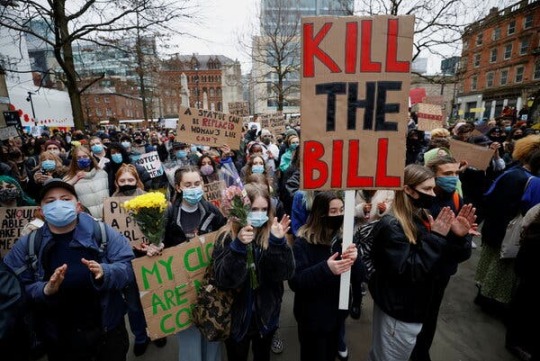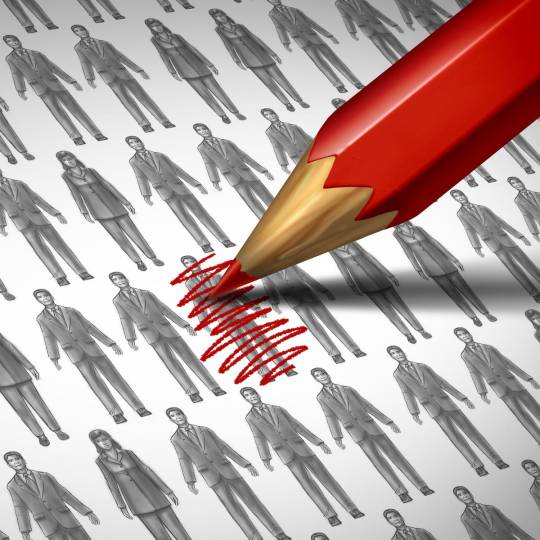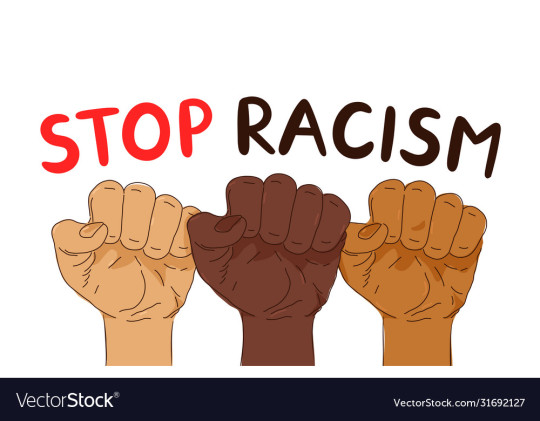Don't wanna be here? Send us removal request.
Text
What impact does online trolling have on one’s mental health?
Many argue the relationship we have established with social media, due to excessive use and high dependency has transformed into something called ‘digital citizenship’ (Lupton, 2013). However, the constant usage of inappropriate language or mocking an individual or a group of people, thereby causing disruption to their digital citizenship is known as online trolling (Cruz et al., 2017).

The very digital citizenship entitles us to have positive interactions with like-minded people (Cruz et al., 2017). It aids us to learn from each other and maintain connectivity with our friends and family, especially at times like during Covid-19 lockdowns (Cruz et al., 2017). However, it is the ‘kind’ of interactions individuals get exposed to, which determines the impact social media has on their mental health (Lupton, 2013; Cruz et al., 2017).
As online trolling is associated with negative remarks, inappropriate language, and varied levels of mocking, it produces a negative impact on one’s mental health (Cruz et al., 2017). Interactions with trollers can lead to higher levels of depression and anxiety (Cruz et al., 2017). This is because it reduces self-esteem and satisfaction with the ways one lives their life (Cruz et al., 2017). Trolling can also cause loneliness to the recipient, as such interactions reduce faith not only in close friends and family, based on the fear trolling causes, but also in society at larger, producing a feeling of helplessness (Cruz et al., 2017).

Thus, this reflects to how the Government needs to do more to prevent online trolling to harbor on social media platforms. Interestingly, British influencer, Katie Price has been campaigning for people to sign up for her proposal of ‘Harvey’s Law’ (McCormack, 2021). Although she herself is used to facing trolls in large numbers due to affairs in her private life, when her son Harvey who was born with Prader-Willi Syndrome, faced trolls for the ways he acts and behaves in public, she started this petition (McCormack, 2021). The law requests the Government to sentence trollers for a period of time to jail and impose tougher restrictions on people attempting to troll individuals like Harvey, who are born with special conditions (McCormack, 2021).
Bibliography
Cruz, A., Seo, Y., & Rex, M. (2017). Trolling in online communities: A practice-based theoretical perspective. The Information Society, 34(1), 15-26. https://doi.org/10.1080/01972243.2017.1391909
Lupton, D. (2013). Quantifying the body: monitoring and measuring health in the age of mHealth technologies. Critical Public Health, 23(4), 393-403. Retrieved from http://dx.doi.org/10.1080/09581596.2013.794931.
McCormack, K. (2021). Katie Price starting a new petition as she continues to fight for Harvey's Law. mirror. Retrieved from https://www.mirror.co.uk/tv/tv-news/katie-price-confirms-shes-starting-23548964.
Seabrook, E. M., Kern, M. L., & Rickard, N. S. (2016). Social networking sites, depression, and anxiety: a systematic review. JMIR mental health, 3(4), e50. Retrieved from https://mental.jmir.org/2016/4/e50/
0 notes
Text
Do social media influencers regress society to compel to perform gender stereotypes?
Our world has undergone several socio-cultural changes, wherein we have and are slowly accepting the distinction between sex and gender (Åkestam et al., 2021). LGBTQ and abortion rights are some brilliant examples of the ways we as a society have progressed. At the same time, the digital era has given rise to several individuals who receive acute amount of media attention (Brooks et al., 2021). In reference to social media particularly, they are popularly known as social media influencers (Brooks et al., 2021). However, their portrayal on digital media platforms could be perceived as one which compels society to once again ‘follow’ gender norms (Casad & Timko, 2017; Åkestam et al., 2021). In other words, the stereotypical depiction of influencers’ physical traits, psychological behavior, job roles, and personality features has a cognitive effort on us that forces us to mirror them in every shape and form (Åkestam et al., 2021).

Stereotypical representation by female influencers reinstates the belief of an ideal body image a woman should possess (Klein, 2013). Female influencers often post images of them wearing dresses (such as swimsuits, bikinis, short dresses, and skinny clothes) that highlight particular parts of their body, which in turn becomes the notion of how women should dress up to be attractive enough (Klein, 2013). Likewise, high beauty standards have been established by influencers, thanks to brand endorsements (Chae, 2017). In the world of influencers, beauty is characterized by the usage of expensive and luxurious beauty products, bright makeup, and smooth and fluffy hair (Chae, 2017). However, this leads to women ‘self-objecting’ themselves (Fardouly et al., 2017). Excessive and high frequency of interaction with these influencers urges women from all walks of life to attempt to match such standards of beauty, body, and luxury (Fardouly et al., 2017).
The world of men intersects with the facets of stereotypes faced by women. Social media is flooded with men and male influencers posting shirtless photos (Piatkowski et al., 2020). These photos reflect the ‘masculine’ physique men are expected to have. This includes having a muscular body, chiseled face, tall, and large and strong arms (Piatkowski et al., 2020). And this is what attracts female attention and likes on social media (Piatkowski et al., 2020). Thus, this creates a toxic environment for masculinity to exist within the perils of muscularity (Ging, 2017). In other words, toxic masculinity refers to the urge to have dominance over others and having a toxic male character, which is bounded by violence, pornography, and sexual desires (Ging, 2017). Within this toxic masculine culture, men with queer personality traits are often regarded as ‘feminine’ (Bridges, 2013). These traits include everything but are not limited to such as using makeup, wearing bright coloured clothes, and having non-athletic passions and hobbies (Bridges, 2013).

One aspect of the intersection between males and females is the notion of ‘thin privilege’ (Williams, 2017). Influencers have bred the idea that being ‘fat’ is certainly not attractive, and being ‘fit’ is the only to way have some sort of attractive value to yourself (Williams, 2017). At the same time, this notion particularly affects people of colour, as genetically they tend to have higher body weight when compared to whites (Williams, 2017).
While we discussed how influencers try to reinforce gender stereotypes in our society, in reality, the public is not naïve. 44% of Britons distrust the way influencers portray their lives (Feldman, 2019). However, a report by Garlick (2020) reveals how female influencers earn significantly less than their male counterparts, which makes us believe that while influencers are culprits for perpetuating gender stereotypes, they themselves can be victims of the same (Garlick, 2020).
Bibliography
Åkestam, N., Rosengren, S., Dahlén, M., Liljedal, K., & Berg, H. (2021). Gender stereotypes in advertising have negative cross-gender effects. European Journal Of Marketing, 55(13), 63-93. https://doi.org/10.1108/ejm-02-2019-0125
Bridges, T. (2013). A Very “Gay” Straight? Hybrid Masculinities, Sexual Aesthetics, and the Changing Relationship between Masculinity and Homophobia. Gender & Society, 28(1), 58-82. https://doi.org/10.1177/0891243213503901
Brooks, G., Drenten, J., & Piskorski, M. (2021). Influencer Celebrification: How Social Media Influencers Acquire Celebrity Capital. Journal Of Advertising, 50(5), 528-547. https://doi.org/10.1080/00913367.2021.1977737
Casad, B., & Timko, B. (2017). Gender Stereotypes. The SAGE Encyclopedia Of Psychology And Gender, 755-758. Retrieved from http://dx.doi.org/10.4135/9781483384269.n.
Chae, J. (2017). Explaining Females’ Envy Toward Social Media Influencers. Media Psychology, 21(2), 246-262. https://doi.org/10.1080/15213269.2017.1328312
Fardouly, J., Willburger, B., & Vartanian, L. (2017). Instagram use and young women’s body image concerns and self-objectification: Testing mediational pathways. New Media &Amp; Society, 20(4), 1380-1395. https://doi.org/10.1177/1461444817694499
Feldman, R. (2019). Unreal life: just 21% of Brits believe internet personalities portray life honestly | YouGov. Yougov.co.uk. Retrieved from https://yougov.co.uk/topics/technology/articles-reports/2019/10/31/unreal-life-just-21-brits-believe-internet-persona.
Garlick, H. (2020). Why gender stereotypes are perpetuated on Instagram. Ft.com. Retrieved from https://www.ft.com/content/2cc5ca3a-6337-11ea-a6cd-df28cc3c6a68.
Ging, D. (2017). Alphas, Betas, and Incels: Theorizing the Masculinities of the Manosphere. Men And Masculinities, 22(4), 638-657. https://doi.org/10.1177/1097184x17706401
Klein, K. (2013). Why Don 't I Look Like Her? The Impact of Social Media on Female Body Image (Ph.D). Claremont McKenna College. Retrieved from https://scholarship.claremont.edu/cgi/viewcontent.cgi?article=1749&context=cmc_theses
Piatkowski, T., White, K., Hides, L., & Obst, P. (2020). The impact of social media on self‐evaluations of men striving for a muscular ideal. Journal Of Community Psychology, 49(2), 725-736. https://doi.org/10.1002/jcop.22489
Rose, J., Mackey-Kallis, S., Shyles, L., Barry, K., Biagini, D., Hart, C., & Jack, L. (2012). Face it: The Impact of Gender on Social Media Images. Communication Quarterly, 60(5), 588-607. https://doi.org/10.1080/01463373.2012.725005
Williams, A. (2017). Fat People of Color: Emergent Intersectional Discourse Online. Social Sciences, 6(1), 15. https://doi.org/10.3390/socsci6010015
0 notes
Text
Kill the Bill: Are protestors not confident with online protests?
The usage of the internet and other forms of technologies by groups, individuals, and activists to organize, mobilize and participate in protests is known as online protests (Van Laer, 2010). This is particularly in reference to the recent PCSC Bill, introduced by the Home Secretary, Priti Patel, and in fact, received royal assent in May 2022. PCSC Bill stands for Police, Crime, Sentencing and Courts Bill (Davies & Gayle, 2022). This bill imposes more powers to police officers to control, restrict, or in cases refuse to give permission to hold protests (Davies & Gayle, 2022). This gave rise to the slogans of ‘kill the bill’. Hence, I argue that would this bill urge the protestors to switch to online platforms to hold protests, along with lesser restrictions. However, towards the end, I will suggest two factors, which perhaps are dampening confidence amongst the protestors to fully depend on digital media platforms.

Online forms of protest entail three forms- petitions, boycotts, and written letters (Earl, 2006). Online petitions have been said to be significant sources of activism, especially when it comes to controversial matters (Earl, 2006). For example, after the emergence of the Party Gate scandal, there were several petitions being shared on social media to ask Prime Minister Boris Johnson to step down after lying to the Parliament and to the country about holding parties during coronavirus lockdowns. Likewise, boycotts have long been attributed as a traditional form of social movement (Earl, 2006). A digital spin on boycott means not having any relation with the accused for a period of time (Earl, 2006). In other words, this could refer to not purchasing products of a company or not coming to work (during lockdown when it was working from home). Written letters refer to letters, which are typed on computers, and emailing it to the concerned individual/department/company by informing them about your concerns, displeasure, or expectations.
However, the pandemic exposed the prevalent digital divide in our society (Elliott & Earl, 2016). The distinction between the haves and have-nots is not only based on their levels of income but the extent to which the internet is accessible to such communities and groups (Elliott & Earl, 2016). Furthermore, the digital divide is also related to a lack of digital literacy and skills amongst certain groups of people (Elliott & Earl, 2016). Scholars firmly believe that the internet is essential to build up social and political engagement to bring the change the protests aim at (Elliott & Earl, 2016). More the time we take to fix the issue of the digital divide, the lower the essence of such protests will be (Elliott & Earl, 2016).

The Government’s decision to introduce Online Safety Bill (Woodhouse, 2021) is believed to further deteriorate the levels of confidence protesters would have withholding protests online. Although this bill aims to protect children from harmful content and prevent misinformation and disinformation to spread, it can also be seen as which imposes restrictions on one’s freedom of expression. This is especially in regards to how Ofcom would be given greater powers by the Government under this bill, making some question would that rather perhaps provide the Government greater control over digital media outlets. Thus, Rusbridger’s (2019) argument over politicians regaining control over ways to present information and ‘truth’ gets reinforced under the proposed Bill (Rusbridger, 2019).
To conclude, while technology has compelled us to think about innovative ways to do things differently when it comes to holding protests it still remains quite uncertain. Hence, the digital divide and the Online Safety Bill present challenges to ways we can gain confidence to hold protests on digital platforms.
Bibliography
Davies, C., & Gayle, D. (2022). ‘Kill the bill’ protests: new legislation is proportionate, says Buckland. the Guardian. Retrieved 27 May 2022, from https://www.theguardian.com/law/2022/jan/17/kill-the-bill-protests-new-legislation-proportionate-robert-buckland.
Earl, J. (2006). Pursuing Social Change Online. Social Science Computer Review, 24(3), 362-377. https://doi.org/10.1177/0894439305284627
Elliott, T., & Earl, J. (2016). Online protest participation and the digital divide: Modeling the effect of the digital divide on online petition-signing. New Media &Amp; Society, 20(2), 698-719. https://doi.org/10.1177/1461444816669159
Rusbridger,A. (2019). Breaking News: The Remaking of Journalism and Why It Matters. Canongate Books.
Van Laer, J. (2010). Activists Online and Offline: The Internet as an Information Channel for Protest Demonstrations. Mobilization: An International Quarterly, 15(3), 347-366. https://doi.org/10.17813/maiq.15.3.8028585100245801
Woodhouse, J. (2021). Regulating Online Harms (Report no. 8743). Retrieved from https://commonslibrary.parliament.uk/research-briefings/cbp-8743/
0 notes
Text
Can Cancel Culture aid to prevent racism in our society?
The digital era has snatched away the powers to hold information from ‘gatekeepers’ of truth, such as politicians and journalists, and handed it over to the public (Mueller, 2021). The acts of disapproving people and people’s acts for something that is highly problematic and inappropriate, in relation to issues of social identities, by unfollowing, blocking, disliking, or even banning them on social platforms is known as cancel culture (Ng, 2020; Mueller, 2021). Here, the social identities of class, race, gender, and sexuality are referred, followed by inappropriate acts of racism, gender discrimination, and bullying (Ng, 2020).

The critical race theory argues that racism is not deep-seated in our society (Bouvier & Machin, 2021). It is rather seen as an ‘exception’, which includes acts of public agitation by taking extreme action and using uncomfortable language (Bouvier & Machin, 2021). Thus, Bouvier and Machin (2021) argue that racism is related to an individual and not linked to a particular ideology (Bouvier & Machin, 2021). This is where the fault lies, which gives rise to phenomenon such as ‘cancel culture’ (Bouvier & Machin, 2021).
Therefore, the weakening of institutions, and the structural racism, people of colour have to face in predominately white societies, such as Britain, is what gives momentum to movements such as cancel culture (Bouvier & Machin, 2021). Nonetheless, social media gives voice to other under-represented groups, like LGBTQ and people with disabilities (Bouvier & Machin, 2021; Mueller, 2021). It is interesting to note that Bouvier and Machin (2021) believe that online tools like hashtags, online petitions, shares, and likes can invoke emotion and passion for sensitive issues such as racism (Bouvier & Machin, 2021).

Increasingly it has been observed that supporters of cancel culture are associated with the demand for an apology from the victims of cancel culture (Mueller, 2021). Thereby, there are concerns that such an urge can harm an individual’s future, especially in situations where he or she has committed an act of canceling culture unknowingly (Mueller, 2021).
Cancel culture emerges out of the Two-Step Flow Theory (Mueller, 2021). This means that when information flows through social media channels, it can potentially transform from being a ‘message’ to an ‘action’ (Mueller, 2021).
Criticism of cancel culture particularly comes from right-wing political parties as they fear it could be used as a tool of censorship and raises questions about one’s freedom of speech (Bouvier & Machin, 2021; Mueller, 2021). With that being said, knowledge of cancel culture seems to be fractured in the society, with 35% of Brits being aware of the term as against 38% not knowing the same existing on digital platforms (Smith, 2021). However, when asked about being fearful while sharing views on race- 31% fear sharing opinions on the discrimination faced by people of colour and 28% fear sharing opinions that people of colour enjoy the same benefits as their white counterparts (Smith, 2021). This testifies the kind of wrong perception Brits have about people of colour, without ever acknowledging or understanding the racial acts of microaggression they have to go in their day to day lives.
While cancel culture can provide grounds for further discussion on racism in our society, not willing to accept the cruel acts of racial slavery British colonialism imposed in Asian and African societies. Hence, if I were to relate demolishing monuments and slave statues symbolic of such acts to cancel culture (Geran Pilon, 2020), Home Secretary Priti Patel’s attempts to ‘condemn’ such views can be perceived as startling (Elks, 2020; Taylor, 2021). This is especially due to the fact Patel herself is a person of colour and her ancestors from India must have been victims of cruel acts of British colonialism. This denotes to the extent far-right views have taken hold in Britain.
Bibliography
Bouvier, G., & Machin, D. (2021). What gets lost in Twitter ‘cancel culture’ hashtags? Calling out racists reveals some limitations of social justice campaigns. Discourse &Amp; Society, 32(3), 307-327. https://doi.org/10.1177/0957926520977215
Elks, S. (2020). Toppling of UK statue fuels debate on monuments to slave traders. Reuters.com. Retrieved 27 May 2022, from https://www.reuters.com/article/us-minneapolis-police-protests-britain-s-idUSKBN23F2FD.
Geran Pilon, J. (2020). 2020 America and the Cancel Culture of Fools. Israel Journal Of Foreign Affairs, 14(2), 183-196. https://doi.org/10.1080/23739770.2020.1815365
Mueller, T. (2021). Blame, then shame? Psychological predictors in cancel culture behavior. The Social Science Journal, 1-14. https://doi.org/10.1080/03623319.2021.1949552
Ng, E. (2020). No Grand Pronouncements Here...: Reflections on Cancel Culture and Digital Media Participation. Television &Amp; New Media, 21(6), 621-627. https://doi.org/10.1177/1527476420918828
Smith, M. (2021). Cancel culture: what views are Britons afraid to express? | YouGov. Yougov.co.uk. Retrieved 27 May 2022, from https://yougov.co.uk/topics/politics/articles-reports/2021/12/22/cancel-culture-what-views-are-britons-afraid-expre.
Taylor, J. (2021). Bristol protests: Priti Patel calls demonstrators ‘thugs’ after clashes with riot police lead to 10 arrests. independent.co.uk. Retrieved 27 May 2022, from https://www.independent.co.uk/news/uk/home-news/bristol-protests-priti-patel-thugs-b1823289.html.
0 notes
Text
The Rise of The Greens: From an internet led social movement to a major political party in Europe
The Green parties were founded between the late 1970s and early 1980s in Western Europe (Müller‐Rommel, 1998). The 1983 Germany’s Bundestag and 1997 French Parliamentary elections are where they scored their first seats (Kaelberer, 1998). This time period was marked by phenomena of ‘new politics’, ‘silent revolution’, and a series of cultural changes in the continent, which led to the Greens gaining a foothold in European politics (Müller‐Rommel, 1998).

The theory of postmaterialism is where it all started for the Greens (Kaelberer, 1998). Postmaterialism is that political value that Greens exploited in the 1970s and 1980s, due to the left-wing parties drifting towards the far left (Kaelberer, 1998). In other words, left parties were moving away from the working-class voters and moving closing to the ‘liberal’ voters (Kaelberer, 1998).
At the turn of the century, the ‘Green’ movement slowly transferred to the digital medium, with the message of ‘empowering the Green movement through empathy (Suk et al., 2019). In other words, utilising the digital space to gain momentum for the ideas of environment and climate change, which they stand for, but presenting them on such platforms in a way that it creates empathy for the very issue (Suk et al., 2019). Digital media provided common platforms for people to express their opinions and views on the same, thereby it strengthened the movement and the effects could be felt on the ground (Suk et al., 2019). Digital platforms helped to spread the narrative of ‘change’ in major European countries (like Austria), by mixing emotions with evidences, and providing both facts and stories (Suk et al., 2019).
Thus, in ‘collective memory’, the Greens have successfully managed to created a ‘network’ of Greens in communities across the continent, which testifies how ‘branding’ strategies were used by the Greens to create an ‘intimate public’ by harmonising a collective outlook (Billard & Moran, 2019; Suk et al., 2019). It will not be wrong to say that this is a product of Castells (1997) concept of ‘network society’ (Bennett, 2003).
As a result, the Greens demonstrate the power citizen and social movements have in today’s polarised world (Chadwick & Dennis, 2016). This is due to three main reasons. First, digital communication is deeply embedded in politics today (Chadwick & Dennis, 2016). A hybrid mode allows swift shifting from offline and online modes, as seen during the covid19 pandemic (Chadwick & Dennis, 2016). Thus, helps in adapting to different political strategies in different ways (Chadwick & Dennis, 2016). Third, lack of bureaucratic obstacles in place provides mobility and agility for a party like Greens to stand next to big political parties, such as the Conservatives and Labour in Britain (Chadwick & Dennis, 2016). That being said, I will disagree with Penny’s (2017) stance by using the concept of ‘citizen marketer’, that how political communication within a social movement could potentially undermine democracy (Penny, 2017). If that was the case, the Greens would not become the deal-breaker in forming Governments in countries like Germany and Scotland.
To conclude, citizen participation is key to the success Greens have incurred, not just in Europe, but also recently in 2022 Australia’s Federal Elections. This is because the essence of this political party lies in the individual and not in the institution, empowered by ideologies of modernity (Chadwick & Dennis, 2016). They have come across as a ‘stabilising’ power, striving for economic successes in consideration with various environment measures (Schutz, 2018), cutting across particularly amongst younger voters (Rüdig, 2012). Since they do not have an ideology of their own, as they are more of a ‘continuous’ movement (Müller‐Rommel, 1998), there needs to be sufficient political space for them to exist, survive and thrive (Kaelberer, 1998). However, in Britain, after rejecting the proportional representation voting system in the 2011 Alternative Vote Referendum, their future still hangs in balance under First Past the Post system (Kaelberer, 1998).
Bibliography
Bennett, W. (2003). Communicating Global Activism. Information, Communication &Amp; Society, 6(2), 143-168. https://doi.org/10.1080/1369118032000093860a
Billard, T., & Moran, R. (2019). Networked political brands: consumption, community and political expression in contemporary brand culture. Media, Culture &Amp; Society, 42(4), 588-604. https://doi.org/10.1177/0163443719867301
Chadwick, A., & Dennis, J. (2016). Social Media, Professional Media and Mobilisation in Contemporary Britain: Explaining the Strengths and Weaknesses of the Citizens’ Movement 38 Degrees. Political Studies, 65(1), 42-60. https://doi.org/10.1177/0032321716631350
Kaelberer, M. (1998). Party competition, social movements and postmaterialist values: Exploring the rise of green parties in France and Germany. Contemporary Politics, 4(3), 299-315. https://doi.org/10.1080/13569779808449970
Müller‐Rommel, F. (1998). Explaining the electoral success of green parties: A cross‐national analysis. Environmental Politics, 7(4), 145-154. https://doi.org/10.1080/09644019808414428
Penney, J. (2017) The Citizen Marketer: Promoting Political Opinion in the Social Media Age. New York: Oxford University Press.
Rüdig, W. (2012). The perennial success of the German Greens. Environmental Politics, 21(1), 108-130. https://doi.org/10.1080/09644016.2011.643371
Schutz, S. (2018). How Germany's Green Party Keeps Winning. Npr.org. Retrieved 27 May 2022, from https://www.npr.org/2018/12/29/676028030/how-germanys-green-party-keeps-winning.?t=1653624632807.
Suk, J., Abhishek, A., Zhang, Y., Ahn, S., Correa, T., Garlough, C., & Shah, D. (2019). #MeToo, Networked Acknowledgment, and Connective Action: How “Empowerment Through Empathy” Launched a Social Movement. Social Science Computer Review, 39(2), 276-294. https://doi.org/10.1177/0894439319864882
1 note
·
View note